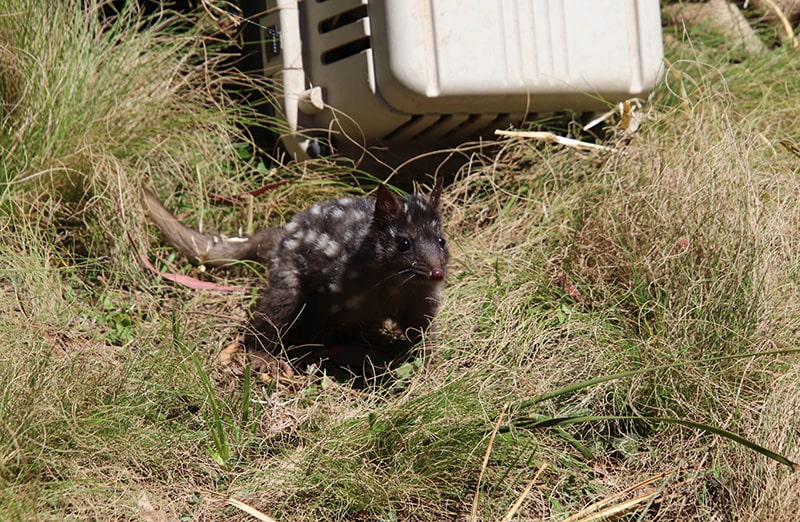Blog
Contact media@wires.org.au for enquiries or call 0416 272 153.
For the latest updates on bushfire recovery projects and emergency response
Read WIRES Emergency Recovery Plan and WIRES National Emergency Response Plan
National Science Week: Conservation Ecology with Aussie Ark

To celebrate #NationalScienceWeek we caught up with our partners AussieArk to talk about conservation ecology, threatened species and the Barrington Tops Sanctuary.
Could you tell us a bit about Aussie Ark, your mission and why it is so important for the future of Australian wildlife?
Aussie Ark was established in 2011 as ‘Devil Ark’, with a focus
on saving the iconic Tasmanian devil from extinction. Since then and
due to overwhelming success, the role of the organisation has
expanded, and now has vision of creating a long-term future for our
threatened Australian species. Aussie Ark will secure wild sanctuaries
to conserve our native wildlife, free from unnatural predation.
Aussie Ark is an adaptive, innovative, private organisation, committed
to changing the trajectory declining species.
There is a focus on threatened species - what does it mean
for a species to be threatened and how do we bring them back from this
status?
By definition Threatened species are “any species which is
likely to become an endangered species within the foreseeable future
throughout all or a significant portion of its range”. Aussie Ark’s
model of conservation revolves around creating insurance populations
of endangered species, ensuring they do not disappear from this
earth. We hope that by creating these populations and then returning
them to the wild, their population numbers will continue to boom!
WIRES strongly believes in collaborative action. After the
tragic 2019/2020 bushfire season, we began our partnership with Aussie
Ark in hopes to improve outcome for a range of unique Australian
species. What have been your highlights of the project so far?
Aussie Ark is thrilled to be working alongside WIRES and with
the support of WIRES Aussie Ark has been able to develop some
incredible programs. WIRES have supported the DevilComeback program,
the return of Eastern Quolls to the Barrington Tops and so much
more. 2021 has even more projects on the horizon and the support of
WIRES ensures they are possible!
Late last year, we attended the opening of the Barrington
Wildlife Sanctuary and were so excited to see the release of many
species into the protected habitat. How do sanctuaries like this work to
rebuild threatened population?
Fencing has become a reality for conservation in Australia,
being the only accountably effective method of keeping feral
predators’ cats and foxes from decimating our native mammals, birds,
amphibians and reptiles, and having catastrophic effects on the
ecosystem. Sanctuaries provide a safe space for wildlife to flourish
and thrive without threat.
What do you believe are the next steps to the restoration and recovery of Australian wildlife?
At this stage next steps include the continuation of sanctuary/
safe haven creation, and the development of insurance populations.
These activities guarantee the survival of Australian species so that
long term they are still here to enjoy.
Search
Newsletter
Stay in touch and get our regular rescue stories, WIRES updates and a free copy of our 15 Ways to Help Wildlife ebook
Recent Posts
- Emergency Response Training for Wildlife Volunteers
- WIRES Introduces New Wildlife Rehabilitation Governance Courses in Collaboration with NPWS
- Community Support for Post-Bushfire Recovery of Wildlife in the Greater Blue Mountains
- Research Grants Program-2023 Recipients Announced
- National Koala Conference
- Nature Conservation Council's Bushfire Conference
- Support Stronger Nature Laws
- Helping Endangered Cockatoos: WIRES Grant Success Story
- Landmark Conservation Project Ensures The Future of The Northern Bettong
- Wildlife Road Collisions Unveiled
